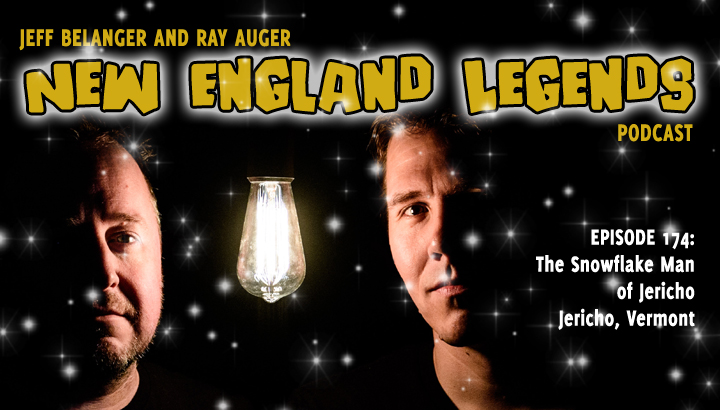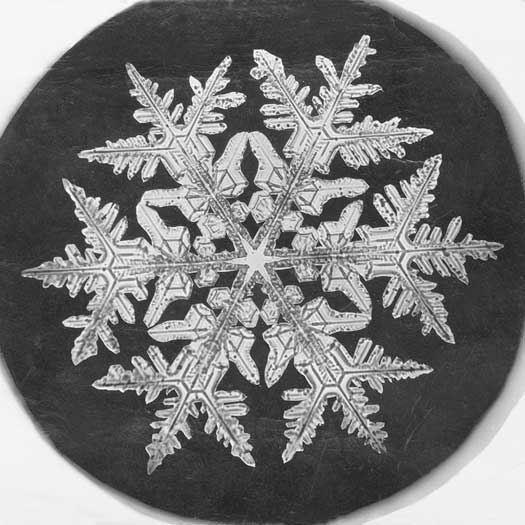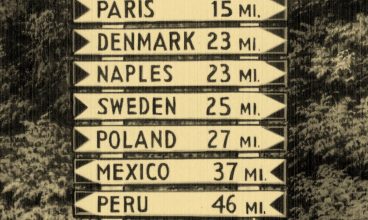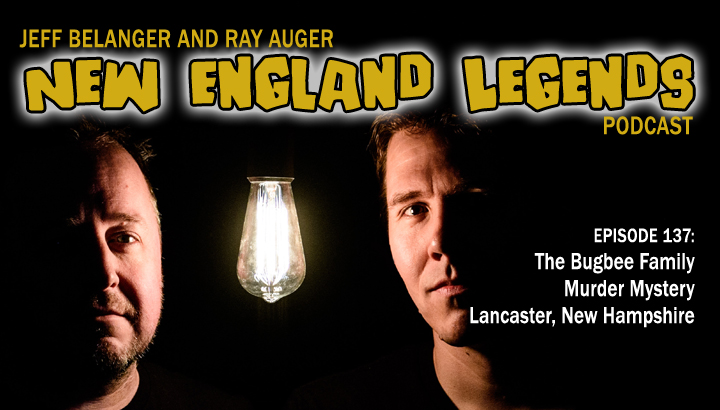

Nuwati Herbals is the proud sponsor of this episode of New England Legends! Use promo code: LEGENDS20 to save 20% off at checkout.
In Episode 174, Jeff Belanger and Ray Auger head to Jericho, Vermont, in search of snow. In 1885, Wilson Bentley figured out a way to attach his camera to a microscope and capture the first close-up photograph of a snowflake. In the coming years he would photograph thousands of images showing the intricate beauty of these ice crystals. His images would be published around the world and even hang in art galleries proving no two flakes are alike and earning Bentley the title: Snowflake Man.
CALL (OR TEXT) OUR LEGEND LINE:
(617) 444-9683 – leave us a message with a question, experience, or story you want to share!
BECOME A LEGENDARY LISTENER PATRON:
https://www.patreon.com/NewEnglandLegends
CREDITS:
Produced and hosted by: Jeff Belanger and Ray Auger
Edited by: Ray Auger
Additional Voice Talent: Rod Jackson
Theme Music by: John Judd
SUBSCRIBE TO THE PODCAST FOR FREE:
Apple Podcasts/iTunes | Google Podcasts | Spotify | Pandora | Stitcher | Amazon Podcasts | TuneIn | iHeartRadio | SoundCloud
JOIN OUR SUPER-SECRET:
New England Legends Facebook Group

The Snowflakes of Wilson Bentley, Jericho, Vermont.

A Snowflake Bentley image circa 1890.
EPISODE TRANSCRIPT:
*A note on the text: Please forgive punctuation, spelling, and grammar mistakes. Like us, the transcripts ain’t perfect.
RAY: It’s cold out here in Jericho, Vermont, Jeff. And those clouds look pretty dark.
JEFF: (SNIFFING) It smells like snow.
RAY: It’s the middle of December in the snowbelt of northern Vermont, that really shouldn’t be a surprise. (SNIFFING) And yeah, I agree. It does smell like snow.
JEFF: I see a few flurries are already falling.
RAY: Aristotle once wrote: To appreciate the beauty of a snowflake it is necessary to stand out in the cold.
JEFF: That’s kind of beautiful, Ray. Quoting Aristotle.
RAY: Have you heard that no two snowflakes are alike?
JEFF: I have heard that! In fact, that’s why we’ve come to Vermont. We’re looking for the guy who proved it. Today, we’re searching for the Snowflake Man of Jericho.
[INTRO]
JEFF: Hello, I’m Jeff Belanger.
RAY: And I’m Ray Auger, and welcome to Episode 174 of the New England Legends podcast. If you give us about ten minutes, we’ll give you something strange to talk about today.
JEFF: Jericho, Vermont, is the next stop on our mission to chronicle every legend in New England one story at a time. So Ray, it’s cold up here in Vermont.
RAY: It is, and we’re outside in mid-December.
JEFF: So this is the perfect place and time to tell folks about our sponsor, Nuwati Herbals! This family-owned business has been making Native American-inspired products since 2002. Folks who know me, know that I don’t drink coffee. I never got a taste for it. But teas! I love tea, and the folks at Nuwati Herbals have a bunch of unique blends.
RAY: This week, it’s fitting we’re sipping hot cups of Storyteller Tea. It’s perfect for increasing your memory and focus. Because telling great stories requires an attention to detail.
JEFF: And if you’re with that special someone, maybe share a cup of their unique blend called Share My Blanket.
RAY: I like the sound of that!
JEFF: It’s got a blend of ingredients to warm you up, and keep you going… if you know what I mean.
RAY: Oh, I know what you mean. Please support Nuwati Herbals because they’re supporting us. AND our legendary listeners get 20% off your order when you use the promo code LEGENDS20 at checkout. Visit Nuwati Herbals dot com. That’s N-U-W-A-T-I Herbals with an S dot com.
[SLIGHT WINTER WIND]
JEFF: Okay, Ray, the snow is starting to fall now.
RAY: Do you know why you can smell snow?
JEFF: I actually don’t. But I know the smell when I smell it. And I have a funny feeling you’re about to tell me.
RAY: I looked it up. According to olfactory scientists, the reason you smell snow is because the temperature drops, there’s humidity in the air, and that combination stimulates a nerve in your brain.
JEFF: That sort of makes sense from an evolutionary standpoint. I mean, getting some kind of internal warning about coming snow can save your life.
RAY: Very true. So when the temperate falls to freezing temperatures, molecules moving around in the air also slow down, so smells aren’t as strong. Your nose gets cold on the outside, but turns warm and moist inside. So what you’re smelling is actually a lack of smell. Boom. Snow.
JEFF: Got it.
RAY: And once snow starts falling, we know no two of those snowflakes are alike, and you’re telling me here in Jericho, Vermont, is where it was proven?
JEFF: It is! And to find out how, and meet the legendary Snowflake Man, we’re going to head back to 1885.
[TRANSITION]
JEFF: It’s the winter of 1885 here in Jericho, Vermont. And 20 year old local boy Wilson Bentley is about to make history. Bentley is infatuated with snow!
RAY: Which is surprising considering her grew up here in Vermont. Snow isn’t exactly a novelty.
JEFF: I get that, but some people love it more than others.
RAY: Wilson was raised on his family’s farm here in Jericho, where the average winter bring 120 inches of snowfall. Most of his education came from his mother. As a young child, Wilson loved to study leaves, spider webs, and butterflies. He even kept a daily journal of weather conditions. He’s one of those natural observers.
JEFF: For his fifteenth birthday, Wilson received a microscope. And that gift opened up a tiny new world to him. He studied leaves, insects, and anything else he could fit under that little lens. Then winter came.
[WINTER]
JEFF: As the snow dropped he became obsessed with trying to study a snowflake.
RAY: Which is easier said than done. First, the second a snowflake comes in contact with a surface even one degree higher than freezing, it quickly melts. So Wilson sets his microscope slides outside in frigid temperatures. He uses a feather to catch the snowflake and carefully transfer the crystal to the frozen microscope slide.
JEFF: He moves the slide over to microscope, but then he was to be careful that his breath doesn’t melt the flake before he has the chance to look through the lens. After a lot of trial and error, he gets his first look at the ice crystal. He’s astounded by its beauty. And pretty soon… he’s hooked. He has to see more.
RAY: Wilson pulls out his drawing pad and tries his best to sketch the wonder he sees before him, but these crystal snowflakes are fleeting. They melt pretty quickly, even in cold weather. Still, he observes snowflake after snowflake. He’s completely overtaken by their beauty. Wilson explains:
BENTLEY: Every crystal was a masterpiece of design, and no one design was ever repeated. When a snowflake melted, that design was lost forever.
JEFF: It’s lost forever unless he can find some way to capture the image. Something better than a sketch. It’s 1885 when Wilson acquires his first camera.
RAY: But cameras are designed for taking pictures of people and landscapes. Wilson has to figure out a way to get the big lens of the camera to line up with the small lens of the microscope.
[HAMMER AND METAL]
RAY: It’s not an easy task, but it’s the only way Wilson sees that he can capture these artistic marvels of nature. And then… an adjustment here… A focus there… And a little bit of snow…
[OLD CAMERA SHUTTER]
RAY: After 90 seconds of an open shutter… 20 year-old Wilson Bentley captures the very first close-up photograph of a single snowflake.
JEFF: This print is beautiful. The intricacies of ice crystal are laid out in stunning detail, detail that will never melt. Wilson Bentley has frozen time and can now bring this masterpiece of nature inside for all to see for as long as the print survives.
RAY: After his first success, Wilson is eager to get outside for the next snowfall. He’s catching more flakes.
[OLD CAMERA SHUTTER]
RAY: And capturing more images.
[OLD CAMERA SHUTTER]
JEFF: And more images.
[OLD CAMERA SHUTTER]
RAY: And even more images.
JEFF: Dozens of photos of snowflakes turn into hundreds. It’s clear, no two flakes are exactly alike. Each one is a masterpiece of design. And now, they can be studied and admired forever. At 20 years of age, Wilson Bentley is already a pioneer of photomicrography.
RAY: In the summer, Wilson is taking extreme close-ups of other items such as leaves and insects, offering the world close-up views that people had seen before under a microscope, but to be able to hold up an enlarged photograph is a game changer.
JEFF: Pretty soon, Bentley is publishing his pictures in various journals – both scientific and popular magazines. But it’s winter snow that’s his real passion. He loves the challenge of being out in the elements and capturing something so fleeting. Dozens of snowflake photographs have turned into hundreds. Almost every storm finds Wilson outside with his camera and microscope capturing flakes. Pretty soon, Wilson is making a name for himself.
[TRANSITION]
JEFF: It’s now 1904, and Wilson Bentley has taken thousands of snowflake images with his camera over the last 19 years. Though his photographs have long outlived their frozen subjects, Bentley knows a photo doesn’t last forever, either. A house fire could destroy decades of work. So he decides to donate 500 of his prints to the Smithsonian Institution to ensure their safety. So many people marvel at the beauty of the snowflake images he’s captured. People are seeing snow in a whole new way thanks to these extreme close-ups.
RAY: All thanks to Wilson Bentley, who the public now calls: the Snowflake Man. Eventually, 2300 of his pictures are published in a book called Snow Crystals. The book spreads Bentley’s work around the world.
BENTLEY: My collection is far superior in both number and beauty, and I might add interest to that of any other collection in the world.
JEFF: Though Snowflake Bentley was giving lectures all over, and sharing his work and passion in various publications, Jericho, Vermont, was always home. It’s December of 1931 when Wilson finds himself wandering through a blizzard.
[BLIZZARD]
JEFF: Still fascinated by weather and snow after all of the years, the 66 year old man stays outside longer than he should. He can’t help himself. Cold and wet, and stumbles back to his house.
[BLIZZARD FADES]
[COUGH COUGH]
JEFF: His most recent snowy expedition came at a high price. Sick with pneumonia after the storm, Snowflake Bentley passes away in his bed in the family farmhouse on December 23rd. And that brings us back to today.
[TRANSITION]
RAY: Looking at some of Wilson’s photographs, I’m amazed. These snowflakes don’t even look real. It’s incredible how different each one is. Some look similar to others, but clearly not an exact match. And when you considering literally countless trillions of snowflakes fall in any one given storm, it’s mind-blowing to think that each of them is a unique design.
JEFF: It’s kind of like those snowflakes our kids make in school, where you fold the paper, and then make various cuts through the folds, and then when you open the paper it’s a unique design.
RAY: Right, but multiply your kid’s homemade snowflakes by infinity times three. And no matter how beautiful each one is… you know what?
JEFF: What?
RAY: You still gotta shovel them off the driveway after a storm.
JEFF: True. Think about it, though. New Englanders have seen a near infinite number of snowflakes in our lifetimes, but Wilson Bentley saw the same thing and wanted to get up close and personal. And when he did, saw something unique and perfect. And then the Snowflake Man of Jericho, Vermont, figured out a way to share that beauty with the world.
[OUTTRO]
JEFF: If you’d like to see some of Wilson Bentley’s snowflake images, head over to our Web site and click on episode 174.
RAY: And we love it when you share what we do with your friends and family. Be sure to subscribe to our podcast because it’s free, then do us a favor and post a review, or tell a friend or two about us on your social media pages. It really helps spread the word and give us new story leads.
JEFF: We also love when you guys reach out to us through our Web site, through our New England Legends smart phone app that you can download right now for free, or through out super secret facebook group.
RAY: A big thank you to our patreon patrons who support everything we do. This group of legendary listeners kick in just $3 bucks per month to get early access to new episodes, plus bonus episodes and content that no one else gets to hear. Just head over to patreon.com/newenglandlegends to become a bigger part of the movement.
JEFF: We’d like to thank Rod Jackson from Nuwati Herbals for lending his voice acting talents this week, and our theme music is by John Judd.
VOICEMAIL: Hey guys this is Patrick from Chicago. And you’re doing a wonderful job. I just want to let you know until next time remember… the bizarre is closer than you think.



